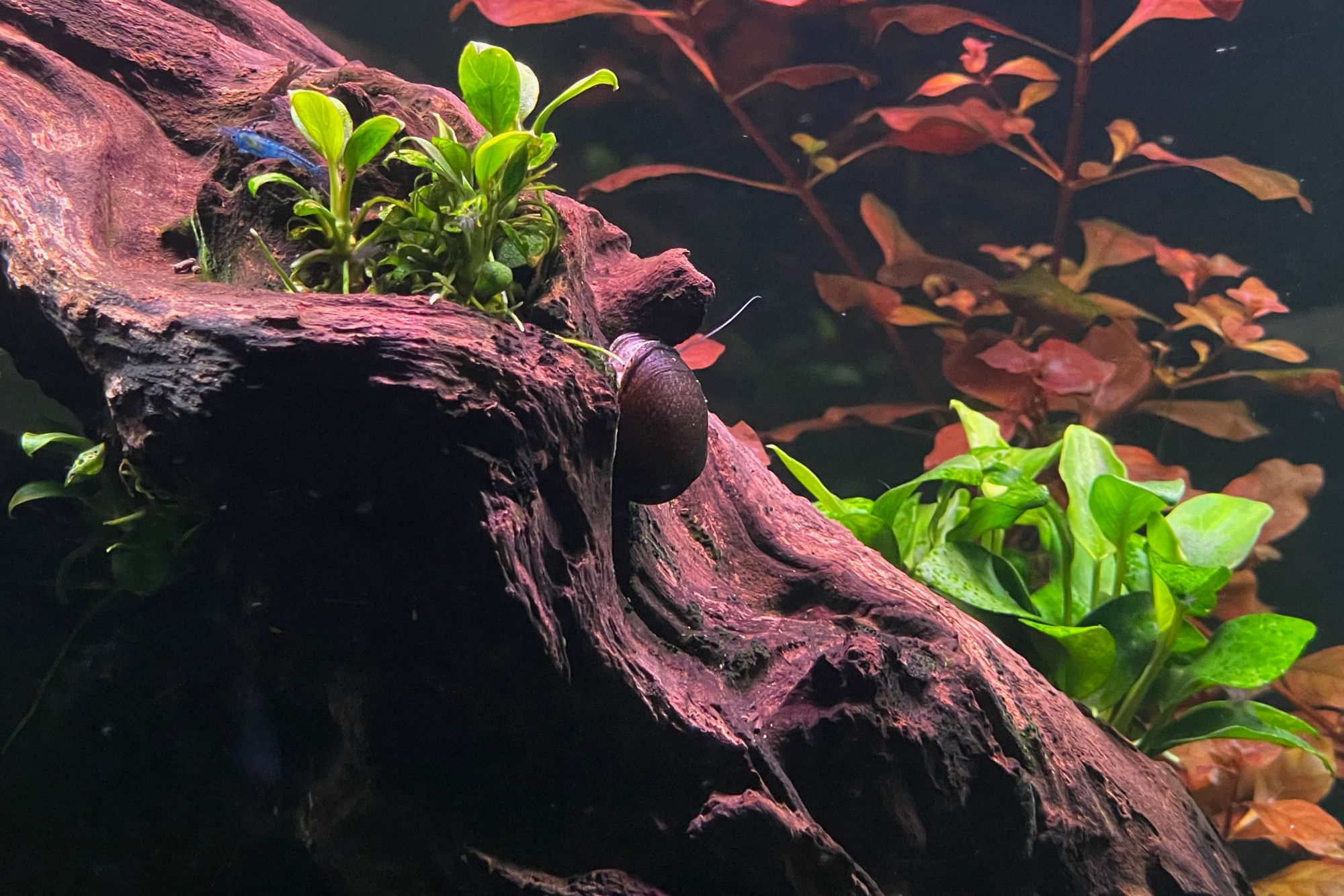General Information
Dwarf Anubias (Anubias barteri var. Nana) is a submersed and emersed rhizome plant that originates in Cameroon and usually grows in shallow areas of fast flowing rivers or streams.
It is a popular aquarium plant because it is robust and very easy to care for, some even call it almost indestructible. Dwarf Anubias is suitable for all tanks and can be placed in the foreground and middle ground. Its leaves are narrow with a medium to dark green color. The exact shade of the leaves can vary slightly based on how much light you have in your tank.
It can grow from 5 to 15 cm tall. Since it has a slow growth rate, it should be combined with fast growing plants in order to avoid algae.
The following sections give an in-depth overview on how to plant, grow and propagate the plant in your tank successfully.
How to plant Dwarf Anubias
Dwarf Anubias is an epiphyte rhizome plant, which means it should not be buried under soil or substrate because its roots might otherwise rot. Instead it is best placed on driftwood, rocks or ornaments by glueing or tying it to the desired surface with fish-safe glue or nylon thread.
Where to place Dwarf Anubias
Due to its relatively small size of maximum 15 cm, Dwarf Anubias is best suited as a foreground and middle ground plant and can be used in all tanks from nano size upwards.
The step-by-step process to plant Dwarf Anubias
- Most likely the Dwarf Anubias will arrive in a black pot with rock wool, which is a cotton-like material cushioning the roots. Carefully remove the black pot and as much of the rock wool as possible. You can either do this under running water or with your tweezer / fingers.
- Afterwards, trim the roots so that they’re no longer than 1-2 cm.
- (Optional) Divide the plant into smaller parts by cutting it with a sharp knife or scissors.
- Now place some fish-safe glue on a surface in you aquarium, pick up an individual plant and push its roots firmly onto the glued spot. Alternatively use some nylon thread to tie the plant onto the desired surface.
- (Alternative) In case you want to plant Dwarf Anubias in sand, gravel or substrate you need to push the whole plant into the substrate and then pull the rhizome while making sure the roots remain submerged.
How to grow Dwarf Anubias fast
The overall growth-rate of Dwarf Anubias is slow. There are, however, some things you can do to speed up the process further:
- Adding CO² to your tank: Although Anubias is suitable for tanks with and without CO² injection, adding CO² will have the added benefit of making Anubias grow both more quickly and much stronger against algae.
- Add nutrients to your tank: In order to support a healthy and longterm growth, Anubias needs a consistent level of nutrients. Otherwise the leaves can turn yellow or brown and deteriorate prematurely.
- Choose the right spot: If placed in direct and strong water flow, Anubias is especially vulnerable to black beard algae (BBA). Therefore you should keep it away from the filter output and consider placing it in a less exposed spot if you have a tank with high water flow.
How to propagate Dwarf Anubias
Dwarf Anubias is a rhizome plant which means it can be easily propagated once it has grown to a certain size. To do this, you should divide the plant into smaller parts by cutting it apart with a sharp knife or scissors. Make sure each individual new plant has at least 3-4 healthy leaves. Afterwards you can plant the new parts as you usually would and watch the plant grow.
Common problems with Dwarf Anubias
- Yellow Leaves: In case the leaves on Dwarf Anubias turn yellow, this is a sign for lack of nutrients in the water. We suggest to check the water parameters in order to determine which fertilizer to add.
- Melting Leaves: In case the leaves on Dwarf Anubias seem to rot or melt, this might also be a sign for lack of nutrients in the water or soil. Other reasons could be too much or too little light. In these cases, it's best to measure your tank parameters and compare them to the data in the "plant characteristic" table in the top right of this page.
